Research
Our Research
Overview
Our research focuses on the following questions:
Funded by the National Institute of Health (NIH)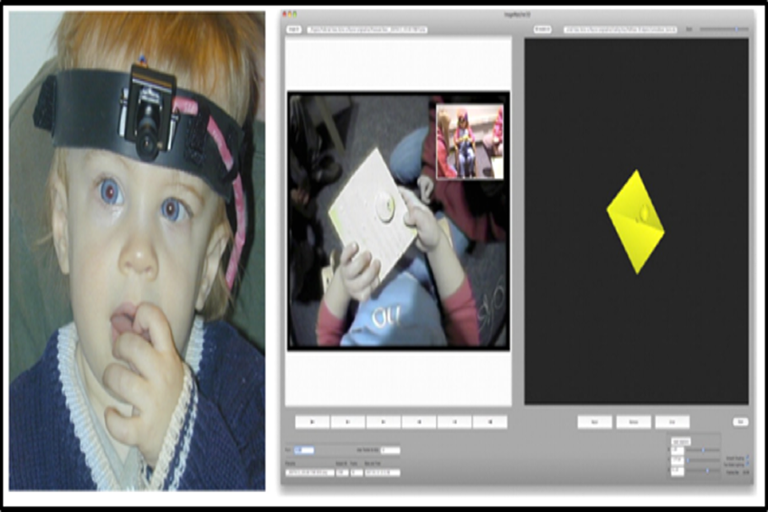
Toddlers learn to recognize and name objects at an astounding rate, and they learn about objects through handling and manipulating them. We are investigating changes in object understanding as children learn about objects through their active manipulations. Through a 5 year-long project funded by the National Institute of Health, Dr. Karin James, Linda Smith and Susan Jones, have shown that:
- Toddlers manipulate objects such that they show themselves only a few views: By two years old, toddlers focus on the same object viewpoints as adults, but 18 month olds do not. Through action, toddlers learn how to manipulate objects so that their visual system receives optimal information.
- Toddlers learn to insert objects into openings through their actions. By 2 years of age, they successfully ‘post’ objects through holes, but cannot perform this seemingly simple task at 18 months. However, we see the precursors to this skill early on, as 18 month olds can orient their hands correctly through a slot, just not objects.
- By 24 months, toddlers orient objects such that they see the ‘planar’ views, and this tendency is driven by visual factors, not haptics. The visual system at this age seems to drive how the toddler should hold and manipulate objects.
- That showing oneself these ‘planar’ views facilitates object recognition in 24 month olds.
- That toddlers do not categorize objects based on color, but rather on shape properties.
- That 18 month olds categorize objects based on their orientation, while by 2 years of age, toddlers are able to categorize objects by shape – similar to adults.
- 18 month olds have a difficult time judging two objects to be the same if they are shown in different orientations, but by 24 months, they can succeed at judging disoriented objects to be the same, except when they are upside-down. This object "inversion effect" is present right up through 5 years of age.
These studies have provided us with valuable information about how object understanding – identification, categorization, and naming, progress rapidly between 18 and 24 months. We have evidence that this progression in understanding may be largely due to active manipulation of objects, and the interactions among visual and motor systems.
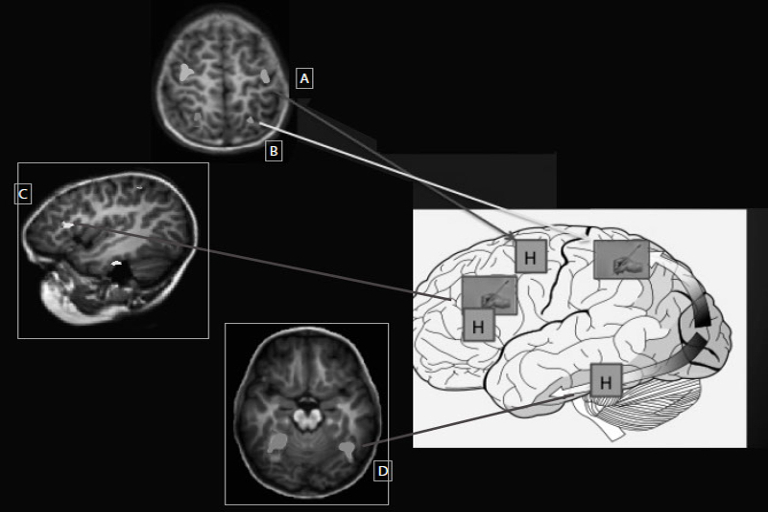
We have conducted several studies that document the effects that self-generated writing by hand has on functional brain development. This research began with several studies on adult letter perception, and has led to the following observations:
- Motor systems in the brain are engaged during letter perception.
- Young children show adult-like brain responses to letters only after they learned to print letters, but not after learning letters through typing, visual study, or even tracing.
- The benefits of learning symbols through handwriting carries over into adulthood when we learn new scripts.
- This benefit may be partially due to the output of the motor act of writing – in the variable symbols that are produced when we first learn to print.
- Only printing experience functionally connects visual and motor networks in the developing brain
Only letters learned through printing experience, not typing, promote functional connections between a letter perception area in the left fusiform gyrus (L-FuG) with sensorimotor regions. Additionally, only letters learned through printing, not shapes learned through drawing, promote functional connections between the same letter perception area and premotor areas. On the other hand, the right hemisphere homologue, right fusiform gyrus (R-FuG), becomes more functionally connected with premotor areas for shapes learned through drawing, than letters learned through printing. Overall, sensorimotor and premotor areas show increased functional connectivity with left hemispheric letter perception areas for letters learned through printing. For more information, view doctoral student Sophia Vinci-Booher's research poster.
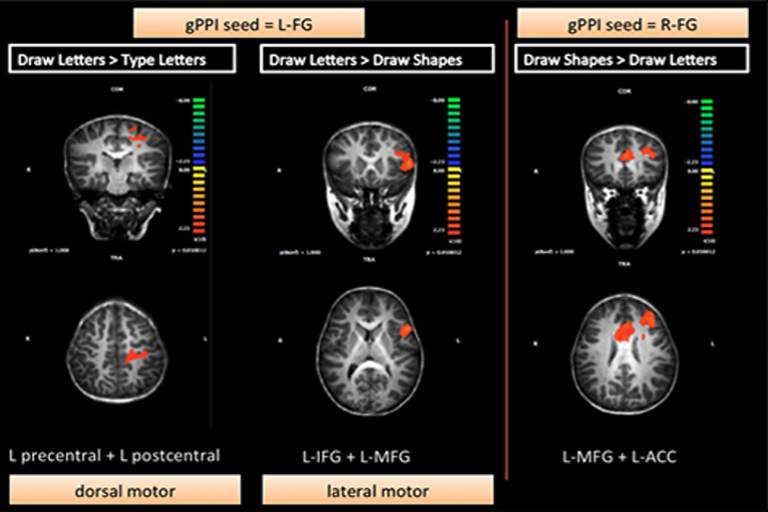
More about the educational summit
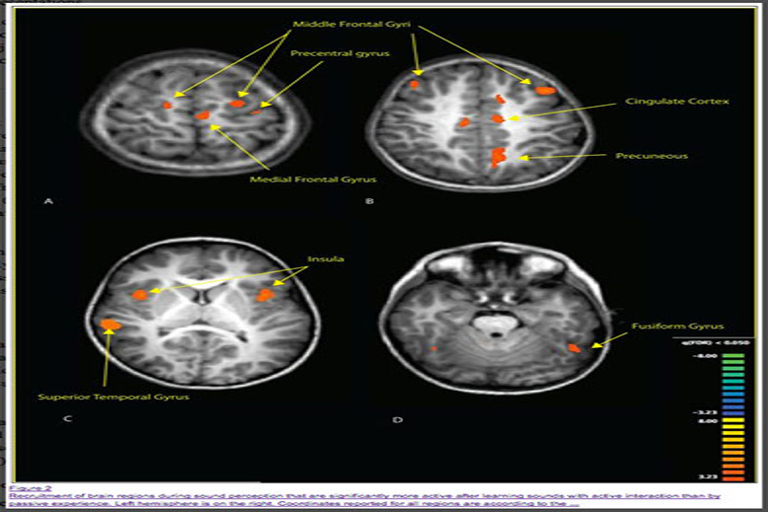
Visually-guided action not only facilitates object recognition and serves to connect brain regions important in understanding objects, it also helps children learn words.
- In this program of research, we first determined that like adults, 5-year old children also had brain regions that responded to verbs that reflect effector (arm or leg) specific verbs (e.g. jump and reach).
- We then showed that activating these regions was experience dependent: only children that learned verbs through self-generated actions (as opposed to watching others perform the same action) showed this adult-like brain activation.
- We are now investigating a large corpus of words that are rated as highly active or highly abstract to further understand how brain regions become connected as a result of experience.
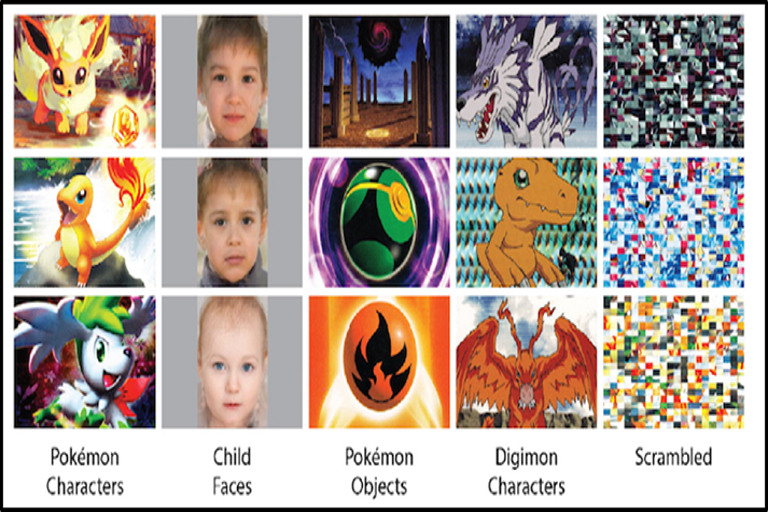
Are young children who have extremely intense interests "experts?" Does the brain processing of the category of expertise in children look like that seen in adults?
- My interest in letter processing emerged from an interest in perceptual expertise. This interest was motivated by my postdoctoral work with Isabel Gauthier and involved participation in the Perceptual Expertise Network.
- These questions also led to a study on young children who were experts in Pokémon cards. In this study, we showed that indeed, Pokémon experts showed brain activation patterns similar to the adult response to faces. Unlike non-experts, these children showed increased activation to pictures of Pokémon in the right fusiform gyrus that was even greater than their response to faces.
We are presently investigating the development of this type of expertise in older participants (Morson & James, in progress). In this current research program, we ask questions such as: Do child experts continue to be experts in other domains? How often does the domain shift and how long does an individual stay in one category of expertise? What types of vocations do child experts choose? What kind of background supports child expertise? Are there personality factors that lead to perceptual expertise?
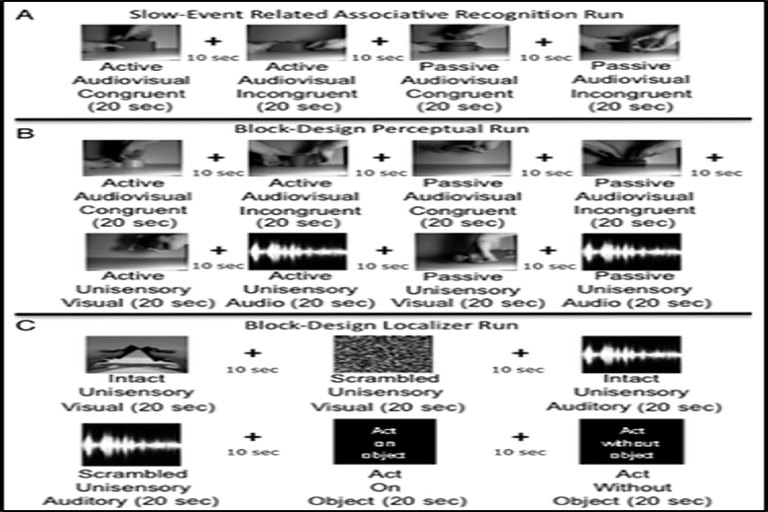
To better understand whether learning through active experience facilitates learning at all ages, we have conducted several studies that show that even adults learn novel objects and sounds better if they are able to actively interact with objects during learning. Associations among visual and motor systems facilitate learning and create networks in the brain that reflect this enhanced learning. Some of our findings include:
- Adults recognize objects better when they can actively manipulate them.
- Additionally, adults are better able to associate sounds with objects.
Much of this early work led to our studies on the development of object understanding through visually-guided action.
Funded by the National Science Foundation (NSF) 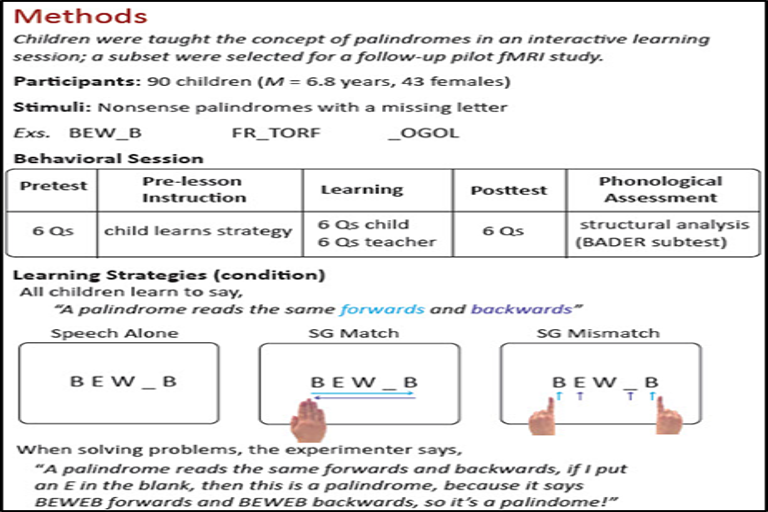
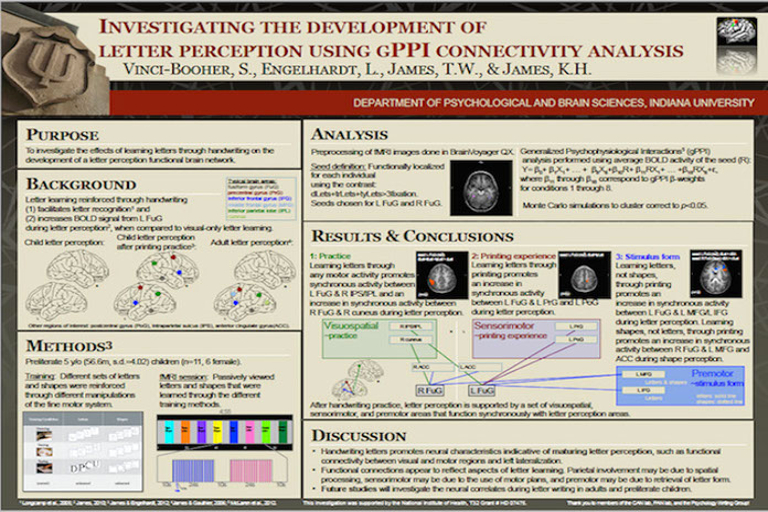
- Jao, R. J., James, T. W., & James, K. H. (2014). Multisensory convergence of visual and haptic object preference across development. Neuropsychologia 56, 381–392. doi: 10.1016/j.neuropsychologia.2014.02.009
- Jao, R. J., James, K. H., & James, T. W. (2014).Development of dorsal and ventral stream connectivity: A visuohaptic psychophysiological interaction study. Journal of Vision, 14 (10), 1104: doi:10.1167/14.10.1104
- Jao, R. J., James, T. W., & James, K. H. (2013). Visuohaptic crossmodal matching: A developmental fMRI study. Journal of Vision, 13 (9), 1330. doi:10.1167/13.9.1330
- Butler, A.J. & James, K.H. (2013). Active Learning of Novel Sound-producing Objects: Motor Reactivism and Enhancement of Visuo-motor Connectivity. Journal of Cognitive Neuroscience, 25(2), 203-218. doi:10.1162/jocn_a_00284
- Butler, A.J. & James, K.H. (2011). Cross-modal versus within-modal recall: Differences in behavioral and brain responses. Behavioral Brain Research, 224, 387-396. doi:10.1016/j.bbr.2011.06.017
- Butler, A.J., James, T.W. & James, K.H. (2011). Enhanced multisensory integration and motor reactivation after active motor learning of audiovisual associations. Journal of Cognitive Neuroscience, 23(11), 3515-3528. doi:10.1162/jocn_a_00015
- James, T.W., VanDerKlok, R.M., Stevenson, R.A., & Harman James, K. (2011). Mulitisensory perception of action in posterior temporal cortex. Neuropsychologia, 49, 108-114. doi:10.1016/j.neuropsychologia.2010.10.030
- James, T.W., Stevenson, R.A, Kim, S., VanDerKlok, R.M & James, K.H. (2011). Shape from Sound: Evidence for a shape operator in the lateral occipital cortex. Neuropsychologia, 49, 1807-1815. doi:10.1016/j.neuropsychologia.2010.10.030
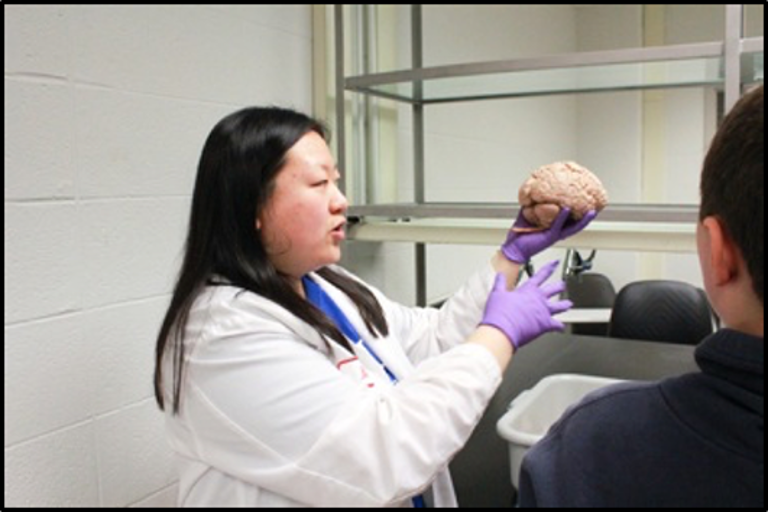
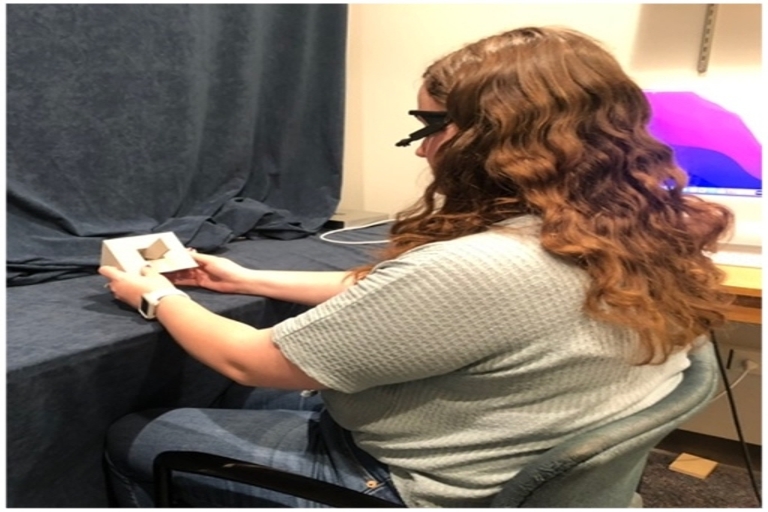
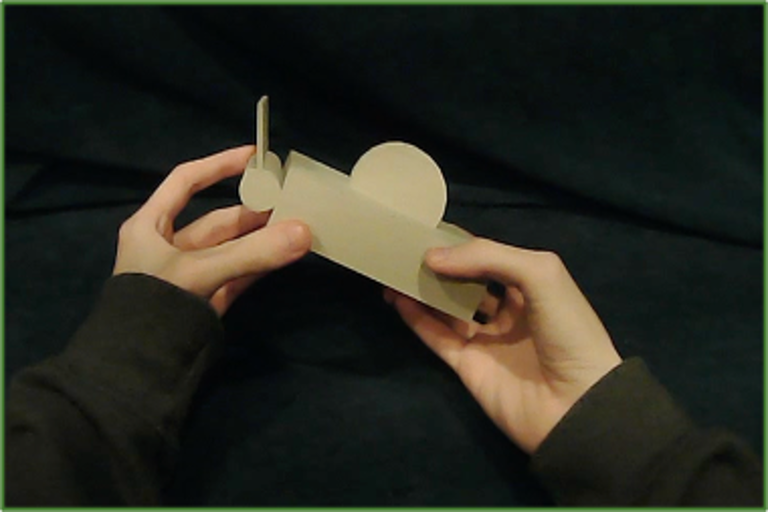
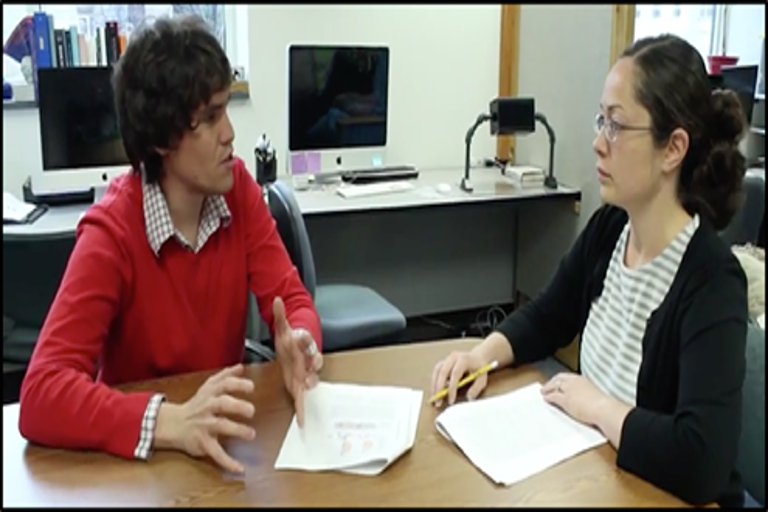
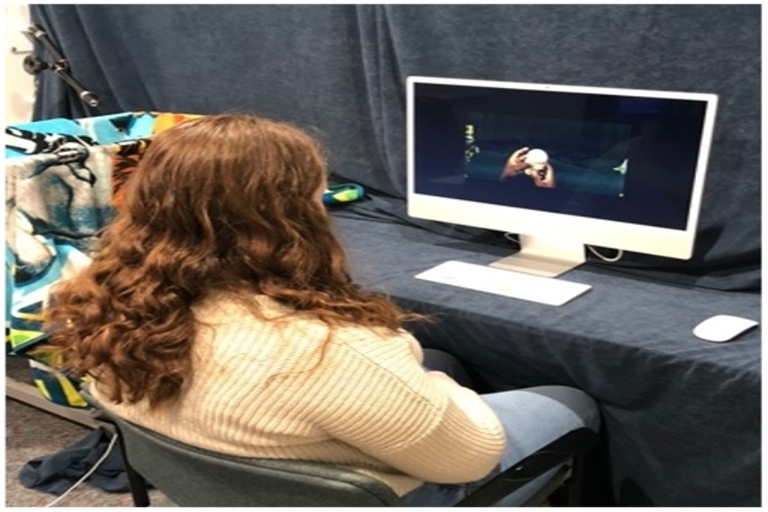
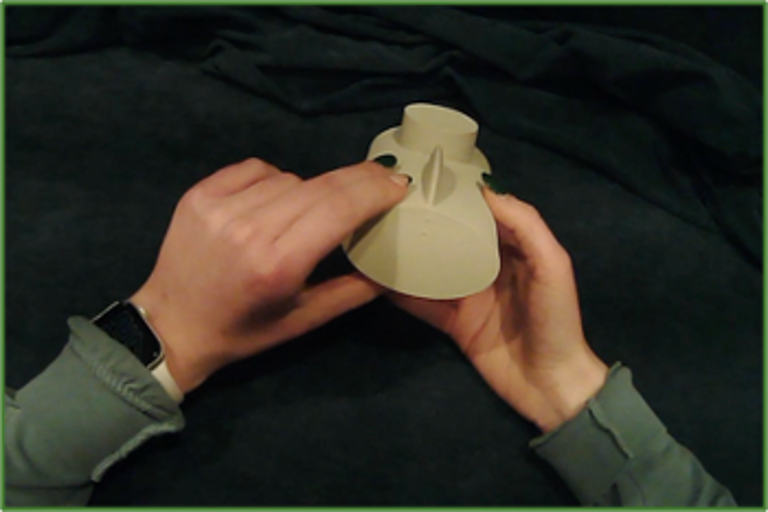
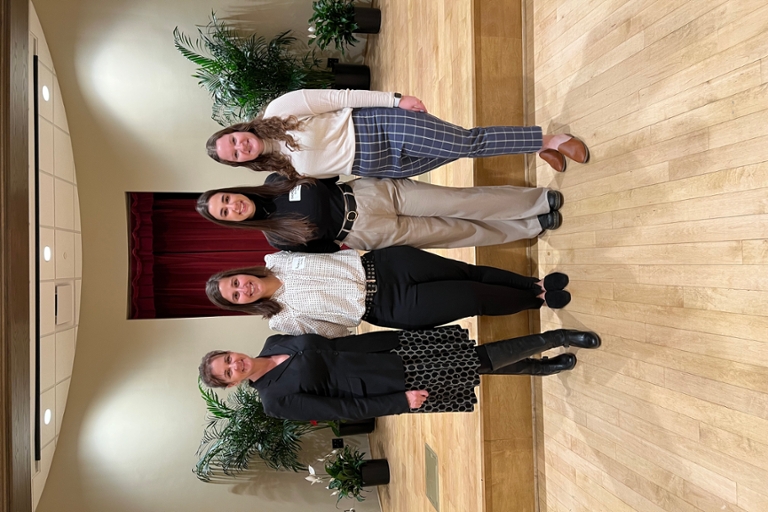
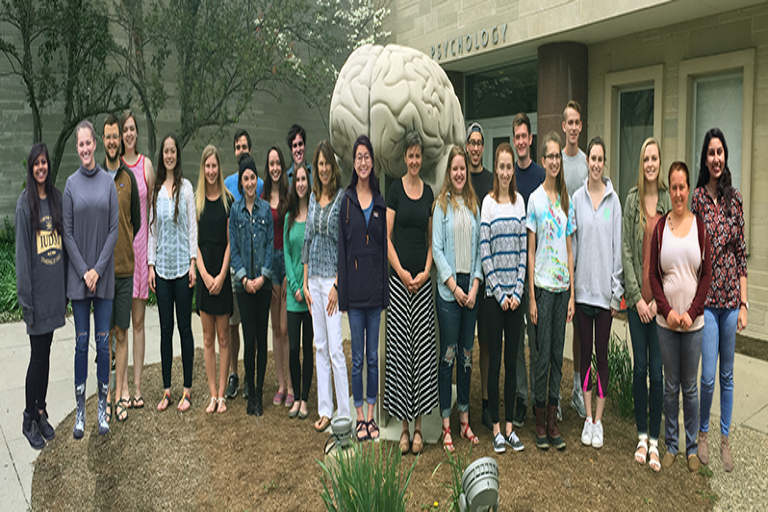
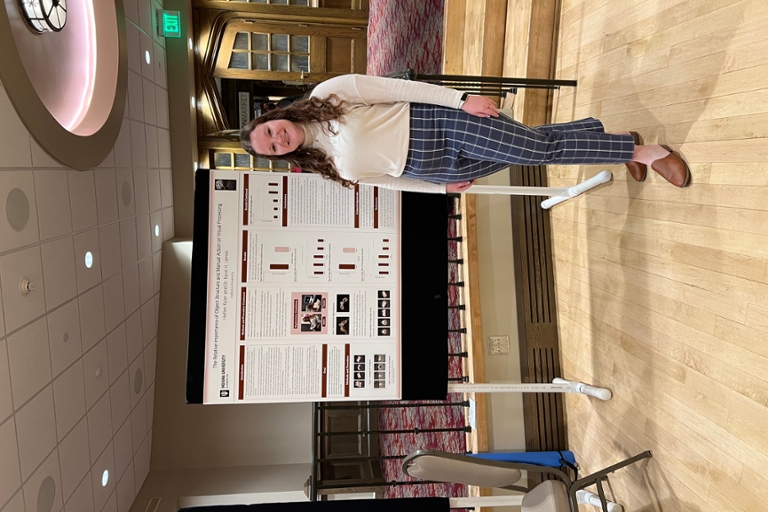








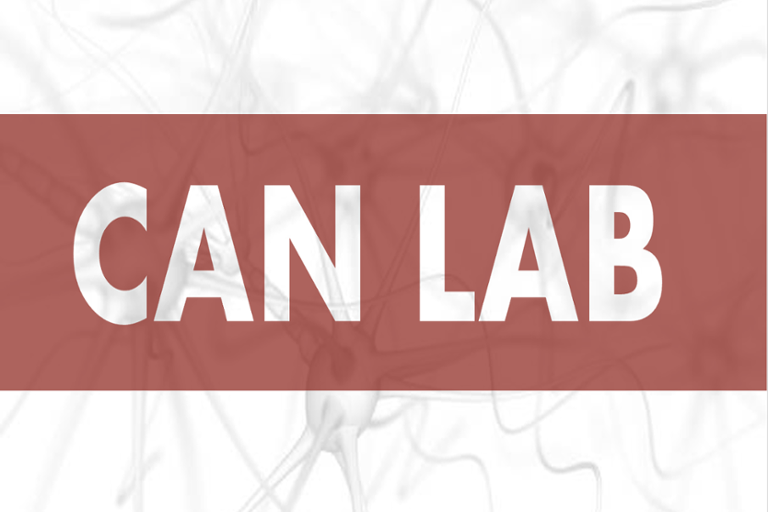
Active Research Support
National Institutes of Health (NIH)
EXTERNAL
"Integrative study of developmental process"
NIH/NICHHD 5T32HD007475
Co-PI
2005 - 2020
National Science Foundation (NSF)
EXTERNAL
"Harnessing Gesture and Action to Improve Pre-Algebra Instruction"
fMRI Consultant
"The role of gesture in word learning: Collaborative Research"
Co-PI
Susan Goldin-Meadow | Department of Psychology, University of Chicago
Karin H. James | Department of Psychological and Brain Sciences, Program in Neuroscience
Elizabeth Wakefield | Department of Psychology, Loyola University
2014 - 2018
Clinical & Translational Science Institute in Indiana (CTSI in IN)
EXTERNAL
"Modern diffusion-weighted MRI protocol for early profiling and detection of reading disabilities in preschool children"
Co-PI
Karin H. James | Department of Psychological and Brain Sciences, Program in Neuroscience
Franco Pestilli | Department of Psychological and Brain Sciences, Program in Neuroscience
2014 -2018
Imaging Research Facility at Indiana University (IRF at IU)
INTERNAL
"Neuroimaging studies of the effects of writing on early mathematical understanding"
PI
"Effects of active learning on word meaning"
PI
"Gesture processing in pre-school children"
PI
"Functional connectivity in the developing brain: PPI and Grainger causality analyses"
PI
TBA
Johnson Center for Innovative & Translational Research Pilot Grant (JCI & TR Pilot Grant)
INTERNAL
"MR-Safe Electronic Tablet for use in Functional MRI”
PI
Karin H. James | Department of Psychological and Brain Sciences, Program in Neuroscience
Sophia Vinci-Booher | Department of Psychological and Brain Sciences, Program in Neuroscience
2017
Social Science Research Commons Grant (SSRC at IU)
INTERNAL
"Efficacy of Two Reading Interventions: A Randomized Control Trial with a Mixed-Method Evaluation"
Co-PI
Karin H. James | Department of Psychological and Brain Sciences, Program in Neuroscience
Rebecca S. Martinez | Department of Counseling and Educational Psychology
2017
Emerging Areas of Research Initiative at Indiana University (EAR at IU)
INTERNAL
"Learning: Brains, Machines and Children"
Co-PI
David Crandall | School of Informatics and Computing
Robert Goldstone | Department of Psychological and Brain Sciences, Program in Cognitive Science
Michael Jones | Department of Psychological and Brain Science, Program in Cognitive Science
Karin H. James | Department of Psychological and Brain Sciences, Program in Neuroscience
David Landy | Department of Psychological and Brain Sciences, Program in Cognitive Science
Sriraam Natarajan | School of Informatics and Computing
Franco Pestilli | Department of Psychological and Brain Sciences, Program in Neuroscience, Program in Cognitive Science
Michael Ryoo | School of Informatics and Computing
Linda Smith | Department of Psychological and Brain Sciences, Program in Cognitive Science
Olaf Sporns | Department of Psychological and Brain Sciences, Program in Cognitive Science, Program in Neuroscience
Martha White | School of Informatics and Computing
Chen Yu | Department of Psychological and Brain Sciences, Program in Cognitive Science, School of Informatics and Computing
2017 - 2020
Faculty Research Support Program
INTERNAL
"Interaction between sensory and motor processes in the brain"
Co-PI
Karin H. James | Department of Psychological and Brain Sciences, Program in Neuroscience
Hannah J. Block | Kinesiology
Aina Puce | Department of Psychological and Brain Sciences, Program in Neuroscience
TBA

